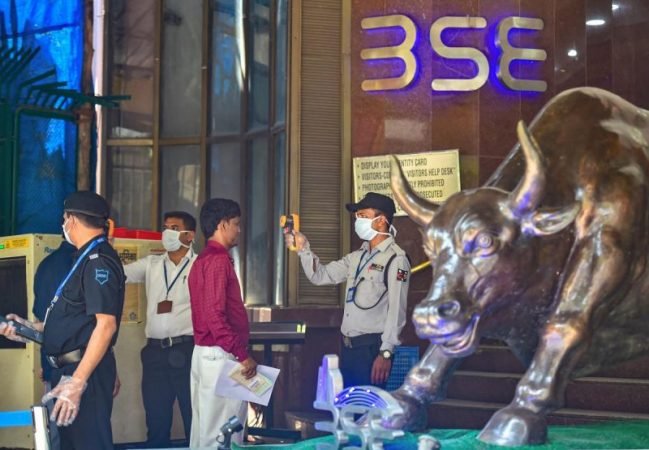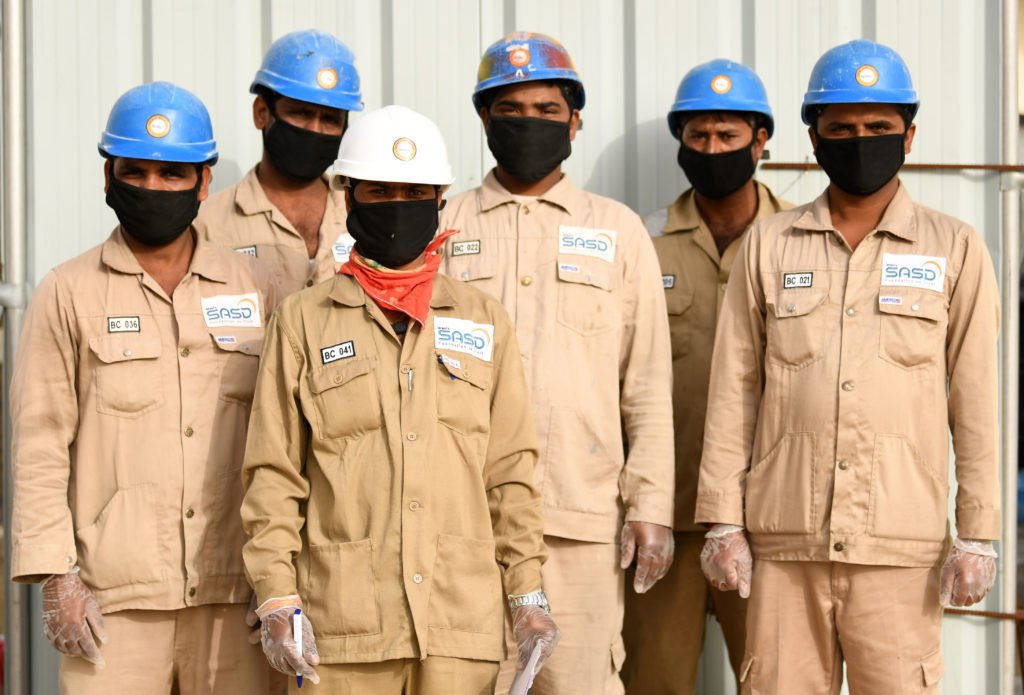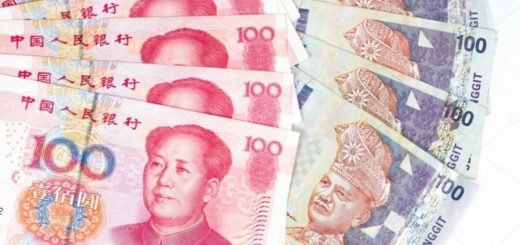The Revival of South Asia – A Million Dollar Question

East Asia was the origin of the Corona Pandemic which has engulfed the world and the economies of even the most developed regions of the world are crying for help. The International Monetary Fund has projected the global growth in 2020 at 4.9% and the future seems quite gloomy. After 8 months of its inception, COVID seems less of a health crisis and more of a perpetually continuing curse for the global economy. The disruption caused by it & the ensuing effects are no longer going anywhere in the near future. In such a background, it seems horrifying to even think about the situation of poor countries. In South Asia, India first reported the crisis in January and since then, there is no looking back. Cases continued to rise despite prolonged periods of lockdowns imposed by Bangladesh, India & Nepal. Recently, Bhutan also imposed nationwide lockdown to break the chain of transmission.
Quite surprisingly though, initially, South Asia fared relatively far better than the western and most developed countries. Despite being home to one of the densely populated countries, having the largest share in the world population (23.4%), the number of COVID cases were just 1.25% of the total cases and 0.5% of the total deaths in the world (Figures in April 2020). However, over time the cases begin to rise and as of August 2020, India is on the verge of replacing Brazil in the total number of cases. Among the South Asian countries, India has the worst condition (on the basis of the total number of cases per million population), followed by Bangladesh, Pakistan, Afghanistan, Nepal, Maldives, Sri Lanka & Bhutan.
The journey from trough to crest
In the beginning, the performance of South Asia created great curiosity among the academicians and researchers as to why a region with one of the highest share of poor population, sub-optimal health infrastructure, one of the lowest income per capita in the world among other things was performing relatively better than Europe and USA.

Reasons advanced for the same varied from low testing rates, sealing of borders, international travel bans, strict lockdowns of manufacturing and other activities, along with the region being home to a relatively young population and unassessed pre-existing level of immunity in the population.
However, this resulted in particularly drastic outcomes for their economy which wasn’t surprising. Severe lockdowns imposed on the citizens as well as economic activities led to unemployment & fall in output, the impact of which shall linger for years to come. While India had imposed sudden and complete lockdown in March, Bangladesh, Pakistan & Bhutan too followed the suit in varying degrees and embarked on a similar journey as India. Sri Lanka imposed curfews but never went for prolonged complete lockdown and also successfully managed to keep its tally low.
Challenging Future
Rome wasn’t built in a day & the similar analogy holds true for the performance of South Asian countries in response to COVID. The problem runs deep within the system & administration, public expenditure preference, infrastructural capacity, etc.
Though the pandemic has brought even advanced economies on their knees, the condition of the developing world is remarkably scary. The World Bank had forecasted a shrink of 2.7% in South Asia with a wild variation between countries. Maldives, Bhutan, Sri Lanka & India’s economy are heavily dependent on Tourism and are experiencing contraction due to a complete halt in global tourism. The sector contributes around 9% of the GDP of the region and is hard hit by the crisis.

Most of the workers of South Asia work as Migrant workers and send remittances to their home country which drives consumption in these countries and forms a significant share of their GDP. With $80 Billion of remittances (2019), India bags the title of the largest remittance-receiving country in the world. Even Nepal and Pakistan receive remittances as high as 28% and 8% of their GDP. The World Bank has predicted that this is expected to fall by a huge margin of 22% in 2020 in South Asia. Pandemic has diminished economic opportunities along with a fall in income and job for international migrants leading to their journey back home. As remittances form such a huge chunk of GDP in these countries, it might result in social disruption, increase in poverty, inequality along with a worsening effect on health and education outcomes (which were already in troubled waters for decades).
The ripples of GST and Demonetization in India resulted in fiscal deficits along with a fall in demand. The Non-Performing Assets of India’s banking industry and the disproportionate burden (on them) due to COVID crisis has forced the banks to gasp for breath. Amidst all this, the fall in consumption demand, income, job loss has led to the building up of recessionary tendencies in one of the fastest-growing economies of the region. Even though the government has announced the much celebratory ‘Atmanirbhar Package’, the inefficient public delivery system has left migrants and BPL families in disarray. Announcement of loan moratorium of 3-months is soon approaching the expiry date and businesses are not ready for it. The manufacturing sector of India has always been the most laggard wheel of the Indian economy and the crisis has only helped in further setting it back. Around 450 Million workers of the economy constitute its informal sector which lacks a social security net. Due to the disruption in the supply chains across the world (& in South Asia), industries are facing shortages of input along with cross-sector disruption. The Asian Development Bank has projected an estimated loss between $387 Million to $30 Billion depending upon the stimulus-response.
Pakistan has already been reeling under slow growth and recently asked for a bailout package from the IMF. Amid all this, the COVID imposed restrictions, lockdown and increased fiscal pressure on the country has majorly affected the informal sector which employs the largest share of its workforce.

Bangladesh had similar experiences as that of India, Pakistan & Sri Lanka with respect to the slowdown of the economy even before the crisis. On top of this, a slow response from the government, under-funded health infrastructure, and lack of a proactive response in the face of community transmission has only amplified the situation. According to the Asian Development Bank, the country can lose over 1% of its GDP as a consequence of COVID-crisis. Like India, the country heavily relies on remittances, MSME sector (Textile) which is export-oriented and lop-sided dependence on China for input and other Supply chain connections. The stimulus package launched by PM Hasina was narrow in its approach and is not likely to benefit the large share of its informal workers and poor population. The country is also facing a refugee crisis (Rohingya) which are residing in cramped refugee camps which can lead to the rapid spread of the COVID infection.
Due to the closing down of international borders, the most affected sector in Asian economies is the Export sector. Bangladesh’s Garment factory (has limited markets in the US & European Union) faced cancellation of orders. Nepal’s handicrafts sector which employs over 1 Million and has limited markets too faced the same fate. India, Pakistan along with the apparel industry of Sri Lanka lost billions of worth of orders due to COVID. The MSME sector of the countries in the region has been a victim of liquidity crunch, supply chain disruptions and labour shortages (irony!). FMCG Sector & consumer durable are suffering due to low private consumption. Some industries like automobile, textile, pharmaceuticals, etc. which are heavily dependent on imports are operating at half the capacity with low employment and facing a lack of inputs which need to be imported.
132 million people in the region are at risk of falling into the trap of extreme poverty. Widening inequality with adverse consequences for marginalised sections, especially women can affect the social fabric. Women’s employment is already poor in South Asia with the majority of them (91%) employed in the informal sector which has been one of the worst affected sectors.
Hope for the dwindling boat
Like every other time, the key to coming out of this crisis is to join hands.
Public-Private Partnership and Cooperation to ensure that the economy comes back on track is the need of the times. In the case of the remittances, it is quite essential to classify it as an essential service which can be accessed through banks as well as non-financial institutions in both the source as well as recipient countries. Provision of cash backs and elimination of transaction cost on transactions done through formal channels will go a long way (Bangladesh launched 2% cashback scheme recently). Absence or sub-standard social safety nets in these countries leads to the disproportionate reliance on remittances by the migrant worker’s families. It is of utmost importance to secure this route so as to avoid a domino effect.
Industry oriented relief measures for revival of the investment and employment along with tax incentives for the export sector, small businesses, aviation and tourism will aid the revival trajectory. Strengthening health expenditure and maintaining a stock of PPE kits for healthcare workers should certainly be the topmost priority.
Baring India & Sri Lanka, there is ample scope and dire need to promote Start-up culture in the region. The former are no leaders in this sector, yet, within the region itself, they are relatively better performers. Start-ups, especially those which employ marginalised sections of the society can fuel the engine of the economy and boost private consumption. The government needs to assist & encourage them through financing packages, tax incentives and a conducive business environment.

The UNESCAP Framework on Socio-Economic response to the COVID crisis has suggested finding a silver lining in this and taking this as an opportunity to fill the gaps and holes in the economy. A stimulus package ranging from 7 to 14% of the GDP targeting the vulnerable sections could help in reviving and significantly boosting the economy. A major segment of this stimulus should be focused on strengthening health infrastructure and providing universal health coverage.
The Direct Cash Transfer Schemes can work as automatic stabilizers in these times. It would provide basic income security and help boost private consumption. MNREGA (India), Benazir Income Support Program (Bangladesh), Ehsaas emergency cash programs (Pakistan) can significantly help in reducing multidimensional poverty.
During these times when tax revenue collection has received a big blow, providing stimulus packages too require a great deal of mathematics in fiscal space. Exploiting the fall in global fuel prices, imposing COVID-cess (for e.g., on Alcohol), altering the tac base, voluntary donations, CSR funding can be way out. G20 countries have endorsed the suspension of Debt Service Payments in 2020 which is a huge relief for less developed countries.
COVID Crisis has provided a harsh lesson to the South Asian nations to work on their freight corridors, poor transport and logistics systems & lack of digital transport documentation (Manual transhipment system led to delays and inefficient transport during the emergency). Infrastructure modernisation with electronic cargo tracking, inspection and clearance along with coordinated development of Corridors linking the transport networks passing through the regions is the key to a robust and resilient region resistant to a crisis of this scale.
Public Sector banks can be leveraged to provide services to the hinterland and be the vehicle of change in the lives of millions. The region has a predominant presence of Public sector banks which can take the charge of last-mile connectivity for DBT and other similar stimulus packages launched in the future. For the region to come out of this unprecedented situation, some unprecedented changes in the system are required which were due for decades. It’s time to act proactively (like never before) or else, the growth of the region would experience a setback, the consequences of which shall be seen for many decades to come.



















